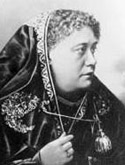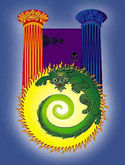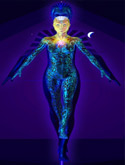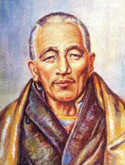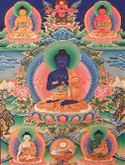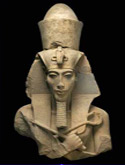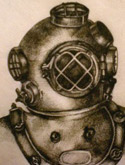Sagittarius 2011: William Blake: Visionary Artist and Poet.

Chiron teaches Achilles.
Keynote
“I see the goal. I reach the goal and see another.”
(Total Lunar Eclipse: December 10, 2011. 6.36 am. Los Angeles, California.)
William Blake: Visionary Artist, Poet and Mystic
Sagittarius the Centaur
William Blake: Visionary Artist, Poet and Mystic


L: Jacob’s Ladder. R: Christ as the Redeemer of Man.
Blake’s Sagittarian Mantra … “Bring me my bow of burning gold! Bring me my arrows of desire!”
 William Blake (1757-1827) had the Sun in Sagittarius and was one of the greatest visionary artists and romantic poets that ever emerged from England, spanning the 18th and 19th centuries. Blake was so far ahead of his time that he was considered mad by some of his contemporaries.
William Blake (1757-1827) had the Sun in Sagittarius and was one of the greatest visionary artists and romantic poets that ever emerged from England, spanning the 18th and 19th centuries. Blake was so far ahead of his time that he was considered mad by some of his contemporaries.
There were many mystical influences in his life, from Swedenborg to Jacob Boehme. He was a devout Christian and scholar of the Bible but abhorred organised religion. His artistic renderings of the Bible were highly esoteric. Blake was inspired by the American and French revolutions that took place during his life, when Uranus, ruler of revolution and the seventh ray of magic, was discovered in 1781.
Uranus dominates Blake’s horoscope, sitting on the midheaven (career/dharma), giving him originality and innovation, and inspiring him to be a revolutionary in his field of art and poetry. He was born at the beginning of the cuspal period of Pisces and Uranus-ruled Aquarius. Uranus rules Blake’s ninth house (9th house takes its meaning from the 9th sign, Sagittarius) – connected to the higher wisdom, philosophy, religion, arts and sciences.
Uranus is also ruler of the seventh ray and, combined with the fourth ray of art and beauty, makes an outstanding artist, because it gives form to colour:
“… [the fourth ray] … is pre-eminently the ray of colour, of the artist whose colour is always great … The combination of four with seven would make the very highest type of artist, form and colour being both in excelsis.
The literary work of the seventh ray man would be remarkable for its ultra-polished style, and such a writer would think far more of the manner than of the matter in his work, but would always be fluent both in writing and speech.”1

Pity.
Blake has been characterised as a “glorious luminary” and by modern critics as, “far and away the greatest artist Britain has ever produced”.
Sagittarius is the visionary, who through great devotion and aspiration, grasps the inner vision and wrestles it from the mind of God. We are told that the sixth ray is going out of incarnation, but in this particular cycle has its strongest expression through Sagittarius. Hence the high idealism and devotion of Sagittarius, even if the sixth ray is not present in a Sagittarian’s ray make-up.
William Blake was part of a “band of brothers”, members of a group of creative advanced souls, sent into incarnation as an “emergency measure” – to offset the dangerous effects of the fifth ray cycle that started during his life (1775).
This fifth ray of science was a great stimulus for the Industrial Revolution but it also had its shadow expression – mind separated from love, ignoring the by-products of European industry: human degradation, pollution and greed; hence the phrase from one of Blake’s poems, “dark satanic mills”.
The sixth ray cycle during the Age of Pisces was still very strong and it is possible that these souls were from a sixth ray ashram, although a fourth ray ashram is quite possible too – maybe from both!
The souls who were sent forth comprised the Romantic Poets of the era of Romanticism, a literary, artistic and philosophical era that began in the mid to late 1700’s. Poets such as Blake, Keats, Shelley, Byron, Coleridge and Wordsworth were all part of this coterie. I mention this elsewhere in The Destiny of the Races and Nations:


L: Adam and Eve. R: Satan in his Original Glory.
“Hence the effort by the Hierarchy in the 1700-1800’s to balance the excesses of the Industrial Revolution via Romanticism in literature and the arts; the classical intellectual attitude that gave way to a wider outlook, which recognised the claims of passion and emotion, and in which the critical was replaced by the imaginative spirit, and wit by humour and pathos.
This initiative was regarded by the Masters as a failure because of Humanity’s lack of response. Hence the ongoing imbalance created, led to a withdrawal of the fifth ray force – “by special and unique arrangement” – because it was deemed that the impetus given to the human “spirit of discovery” has served its purpose.”2
The Romantics preferred a more passionate and imaginative expression (sixth ray), compared to the Age of Enlightenment – that was more about pragmatic reason (fifth ray). Blake was a “visionary” as a result of having united certain factors within himself:
“Each state or field of the mind, each field of knowledge, so to speak, which is reached by mental and emotional energies, is a psychical state, just as the mind picture of a stage with the actors on it, is a psychical state or field.
When the pure vision, as of the poet, the philosopher, the saint, fills the whole field, all lesser views and visions are crowded out. This high consciousness displaces all lesser consciousness. Yet, in a certain sense, that which is viewed as part, even by the vision of a sage, has still an element of illusion, a thin psychical veil, however pure and luminous that veil may be. It is the last and highest psychic state.”3

Whirlwind of Lovers.
(From Dante’s Inferno series, by William Blake.)
This mystical vision and “highest psychic state” is presided over esoterically by the planet Neptune. Blake had Neptune-ruled Moon in Cancer and Cancer rising, a sign of great emotional sensitivity, also connected to the consciousness of the masses.
Cancer is a water sign, symbol of the watery astral nature. Neptune is the “god of the waters” and the soul ruler of this sign. As the rising sign represents one’s soul purpose, Blake’s was to connect with and inspire mass consciousness through his visionary art and imagination. The Cancer placements also enabled a deep empathy and sympathy for the less fortunate of humanity.
Cancer is a sign of birth and the two rays that pour through this sign, the third and seventh, are complimentary to Cancer’s materialising ability. Blake birthed many inspirational ideas as they impressed him from the higher intuitive or buddhic realms. The Tibetan tells us,
“No man begins to co-ordinate the buddhic vehicles until he comes under Neptunian influence in some life or another. When this is the case, his personality horoscope will show Neptunian influence dominating somewhere.”
Blake had many visions, as his art and poetry attest, starting early in life:
“From a young age, William Blake claimed to have seen visions. The first of these visions may have occurred as early as the age of four when, according to one anecdote, the young artist “saw God” when God “put his head to the window”, causing Blake to break into screaming.
At the age of eight or ten in Peckham Rye, London, Blake claimed to have seen “a tree filled with angels, bright angelic wings bespangling every bough like stars.” According to Blake’s Victorian biographer Gilchrist, he returned home and reported this vision, and he only escaped being thrashed by his father for telling a lie through the intervention of his mother.”4
It is obvious from this description that Blake “came in” awakened with etheric vision and higher clairvoyance. The factor in the horoscope that depicts this is his Cancer Moon (the past), in the twelfth house (the subtle realms). Most of his paintings unveil the activities of the inner human worlds, as well as their co-habitants, the deva or faery realm.

Oberon, Titania & Puck with Fairies Dancing.
Whether Blake was a fourth or sixth ray soul, his astral body may also have been on the same ray, or ray line (2,4,6). This would have rendered his emotional body as the main receptor of the higher impressions that emanated from the buddhic plane.

William Blake.
(Other times show later degrees of Cancer rising.)
There are plenty of factors in Blake’s horoscope that contribute to a strong expression of the second ray line of love-wisdom. Sagittarius is ruled by second ray ruler, Jupiter. Jupiter is in the first degree of Sagittarius conjunct his Sun, powerfully accentuating his Sagittarian personality. Due to the nature of the consciousness-expansive Jupiter here, Sagittarius might be called “exaggitarius”, especially given its penchant for story-telling!
Soul ruler Neptune is in the sign of Leo conjunct the other ruler of the sixth ray, Mars. Warlike Mars is opposite to pacific, mystical Neptune, hence the boldness of Blake’s art, in the face of conservatism and his chafing at the authority of the church.
Blake’s Sagittarian Sun rules the house where the chart soul ruler is placed, creating a potent link between personality (Sagittarius) and soul (Neptune). The Sun and Jupiter tenant the fifth house of the chart, known esoterically as the “mansion of the soul”.

Departing Souls.
Mercury in Scorpio is another potent factor; says the Master DK,
“Its true significance will not be understood until the consciousness of individual man is also planetary in its scope and grasp, which is never the case until after the third initiation.”5
Perhaps Blake had reached this exalted stage of consciousness, a “brother of the third degree”? Mercury represents the way one thinks and communicates; in Scorpio, with great depth, insight and at times, very cutting and ruthless. With Mars ruling Scorpio, there is added passion, idealism and loyalty in Mercury’s expression. Some of these factors come together in Blake’s poem, now called Jerusalem, a much loved British anthem.
The poem was inspired by the story of a young Jesus who accompanied his uncle, Joseph of Arimathea to visit the Glastonbury of old. It is also connected to an ideal of establishing a “New Jerusalem” in Britain:
And did those feet in ancient time
Walk upon England’s mountains green?
And was the Holy Lamb of God
On England’s pleasant pastures seen?
And did the countenance divine
Shine forth upon our clouded hills?
And was Jerusalem builded here
Among these dark satanic mills?
Bring me my bow of burning gold!
Bring me my arrows of desire!
Bring me my spear! O clouds, unfold!
Bring me my chariot of fire!
I will not cease from mental fight,
Nor shall my sword sleep in my hand,
Till we have built Jerusalem
In England’s green and pleasant land.
(Click here for a video version from Last Night of the Proms in London.)

One can note in Blake’s soulful, dreamy, ethereal paintings, similarities to the paintings (and poems) of Kahlil Gibran. Gibran was Sagittarius rising with Venus on his ascendant. Gibran had a grand trine between Mercury, Pluto and Uranus – the latter on the midheaven, like Blake:


L: Kahlil Gibran. R: Sorrow and Joy (Gibran).
“There is evidence that Gibran was familiar with some of Blake’s poetry and drawings during his early years in Boston. However, this knowledge of Blake was neither deep nor complete. Kahlil Gibran was reintroduced to William Blake’s poetry and art in Paris, perhaps in Auguste Rodin’s studio and by Rodin himself.
It was then that Gibran read Blake’s works more completely and studied his biography and also viewed many more reproductions of his drawings. In Paris, Gibran was called “the twentieth-century Blake,” and from that time on, Blake played a special role in Gibran’s life. Their reading of the Bible, their rebellion against church corruption, and their sociopolitical visions were very similar.”6
Interesting! One wonders about the thread of consciousness sometimes, whether these two emanated from the same ashram. There is a very strong devotional sixth ray element in Gibran and perhaps this connection affirms that they were both from the 6/4 ashram – that is, composed of sixth ray souls with a sub-ray colouring of the fourth ray.


L: Wise and Foolish Virgins (Blake). R: Kahlil Gibran.

Beatrice Addressing Dante from the Car.

Centaur Cacus Threatens Vanni Fucci.
(From the Dante Inferno series – William Blake.)
“Sagittarius is sometimes depicted as an archer on a white horse and a study of the meaning of this symbolism will reveal a great deal of inner teaching. This is one of the later ways of portraying this constellation.
Earlier, in Atlantean days (from which period we have inherited what we know about astrology), the sign was frequently depicted by the Centaur – the fabulous animal which was half a man and half a horse. The horse symbolism dominated Atlantean myths and symbols, just as the ram and the lamb are prominently to be found in our modern presentations.
This earlier sign of the Centaur stood for the evolution and the development of the human soul, with its human objectives, its selfishness, its identification with form, its desire and its aspirations.
The Archer on the white horse, which is the more strictly Aryan [Fifth Rootrace] symbol for this sign, signifies the orientation of the man towards a definite goal. The man is then not part of the horse but is freed from identification with it and is the controlling factor.

The definite goal of the Centaur, which is the satisfaction of desire and animal incentives, becomes in the later stages the goal of initiation, which meets with satisfaction in Capricorn, after the preliminary work has been done in Sagittarius.
The keynote of the Centaur is ambition. The keynote of the Archer is aspiration and direction, and both are expressions of human goals but one is of the personality and the other of the soul.
From ambition to aspiration, from selfishness to an intense desire for selflessness, from individual one-pointed self-interest in Leo to the one-pointedness of the disciple in Sagittarius and thence to initiation in Capricorn.
It is interesting to note that the astrological symbol for this sign currently used is simply the arrow with a fragment of the bow depicted.

The Archer as well as the Centaur have dropped out of the picture and this is largely because the emphasis or focus of human living today is not based upon the objective outer facts of life upon the physical plane but upon some form of inner focus or emphasis, which varies from the many stages of astral and emotional ambition to spiritual aspiration, and from the activities of the lower mind bent upon selfish interest to the illumination of the same mind through focus upon the soul.
An ancient catechism which all disciples have to master, asks the following questions and supplies the needed answers:
“Where is the animal, O Lanoo? and where the Man?
Fused into one, O Master of my Life. The two are one. But both have disappeared and naught remains but the deep fire of my desire.
Where is the horse, the white horse of the soul? Where is the rider of that horse, O Lanoo?
Gone towards the gate, O Master of my Life. But something speeds ahead between the pillars of an open door – something that I myself have loosed.
And what remains to thee, O wise Lanoo, now that the horses of two kinds have left thee and the rider, unattached, stands free? Now what remains?
Naught but my bow and arrow, O Master of my Life, but they suffice, and, when the right time comes, I, thy Lanoo, will follow fast upon the shaft I sent.

Zen Archer of Edo.
The horses I will leave upon this side of the door, for them I have no further need. I enter free, regain the arrow which I sent and speed upon my way, passing from door to door, and each time the arrow speeds ahead.”
It is for this reason that the keynotes of Sagittarius are five in number.
1. Attached or fused duality – the Centaur. Unattached duality – the Archer. Freedom or one-pointedness – the Bow and Arrow.
2. Human ambition leading eventually to spiritual aspiration.
3. A clear shaft of light which is the intuitive and focussed attitude of the pledged disciple.
4. The “returning arrow of the intuition,” as it is sometimes called. For it is the shaft of the arrow of aspiration which returns to the sender as the arrow of the intuition. Sagittarius is one of the intuitive signs, for only the intuition will suffice to carry a man to the foot of the mountain of initiation in Capricorn.
5. Idealism which is the power to see the vision and to direct one’s course towards it. This is the work of Mars, the expression of the sixth ray.”7
The Tyger
(William Blake.)
“This poem is a moral critique of Christianity and a theological query into the motivations of Creation itself. It asks questions concerning the existence of evil, the malice of Creation, and the Judeo-Christian God’s apparent desire to punish that which he creates. Blake brings to light many problems that would be the philosophical and theological cornerstone of his Romantic artistry.”8

TIGER, tiger, burning bright
In the forests of the night,
What immortal hand or eye
Could frame thy fearful symmetry?
In what distant deeps or skies
Burnt the fire of thine eyes?
On what wings dare he aspire?
What the hand dare seize the fire?
And what shoulder and what art
Could twist the sinews of thy heart?
And when thy heart began to beat,
What dread hand and what dread feet?
What the hammer? what the chain?
In what furnace was thy brain?
What the anvil? What dread grasp
Dare its deadly terrors clasp?
When the stars threw down their spears,
And water’d heaven with their tears,
Did He smile His work to see?
Did He who made the lamb make thee?
Tiger, tiger, burning bright
In the forests of the night,
What immortal hand or eye
Dare frame thy fearful symmetry?
Phillip Lindsay © 2011.
Other Sagittarius newsletters.
Subscribe to newsletter.
Donations
Please support this work.
Stripe is supported in many countries.
- Esoteric Psychology I, Alice A. Bailey. pp. 206, 208. [↩]
- See here and here. [↩]
- The Light of the Soul, Alice A. Bailey. p.109-10. [↩]
- Wikipedia. [↩]
- Esoteric Astrology, Alice A. Bailey. p.359. [↩]
- Gibran Kahlil Gibran & William Blake: Poets of Peace and Redemption. [↩]
- Esoteric Astrology, Alice A. Bailey. pp.175-8. [↩]
- http://bestword.ca/William_Blake_The_Tyger_Analysis_01.html [↩]

